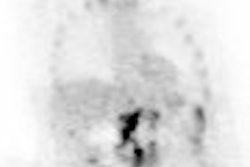Dear Molecular Imaging Insider,
Physicians who diagnose gall bladder dyskinesia will remember 2001 as the year Bristol-Myers Squibb Medical Imaging turned off the tap on Kinevac, a synthetic cholecystokinin drug used in cholescintigraphy. A year later, in December 2002, Bracco Diagnostics resumed manufacturing and marketing the product.
The Kinevac shortage inspired one facility to come up with a clever substitute -- corn oil. Investigators at Rochester General Hospital in New York presented the results of dietary corn oil-based gallbladder imaging at the 2003 Society of Nuclear Medicine meeting in New Orleans.
They conducted 213 corn oil-stimulated cholescintigraphy studies at their institution, and found several advantages to its use. Corn oil elicits the patient’s physiologic response to dietary intake. It is noninvasive, readily available, well tolerated, and easily standardized, the study authors said.
They also noted that because the corn oil is administered enterally, it eliminates the risks associated with intravenous administration, including reaction to Kinevac, improperly compounded sincalide, and IV discomfort.
As a Molecular Imaging Insider, you have access to this story before it’s published for the rest of our AuntMinnie members later this week. For more about this study, go here.
Also be sure to check out our recent reviews on the latest books and multimedia in the field of molecular imaging:
Physics in Nuclear
Medicine
http://www.auntminnie.com/default.asp?Sec=sup&Sub=mol&Pag=dis&ItemId=59271
Nuclear Cardiac Imaging: Terminology and
Technical Aspects
http://www.auntminnie.com/default.asp?Sec=sup&Sub=mol&Pag=dis&ItemId=59208
PET Imaging for the Radiologist: 3 CD-ROM
set
http://www.auntminnie.com/default.asp?Sec=sup&Sub=mol&Pag=dis&ItemId=58310
Single-Photon Emission Computed
Tomography (SPECT): A Primer
http://www.auntminnie.com/default.asp?Sec=sup&Sub=mol&Pag=dis&ItemId=57526




















